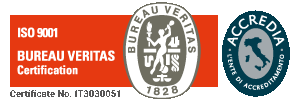Blog
Health and safety at work

Health and safety emergency
When a dangerous phenomenon is sudden and unforeseeable, one can speak of an emergency, a term related to the exceptional nature of the event, but, as things stand at present, deaths at work cannot be defined as such.
It is pointless to report data that we are well aware of and that all the mass media bring to our attention on a, shall we say, daily basis.
But what is it that does not work?
Looking for a scapegoat, for one reason above all that could be the key, is about as utopian as one can get.
In fact, there is no single factor that has a negative impact, but rather a concomitance of behaviour, omissions, laxity and lack of synergy between the law and its implementation on the part of those involved, whether they are controlled or supervised.
The scarcity of inspections will improve with the increase in the number of staff envisaged by the competent ministry, but we strongly believe that, in order to best perform the functions required by this very delicate role, it is of central importance to provide suitable training for inspectors, who cannot and must not find themselves carrying out mere inspections, which are often superficial and therefore lacking in any usefulness.
What are the obligations for companies?
Starting with an effective and correct risk assessment is an essential basis for ensuring a healthy and safe working environment for those who carry out their work.
The risk assessment document (DVR) estimates, among other things, the needs and shortcomings that must be brought down to a low risk level with short-, medium- or long-term interventions. Timing is assessed according to the severity of the event that may result from continuing to operate under risky conditions.
These include emergency planning; ordinary and extraordinary maintenance of equipment; training of workers according to the type of task and level of risk of the company or specific sector; use of individual and collective protection devices (the latter always to be preferred to individual protection); monitoring of accidents and near misses; replacement of equipment with new generation equipment; and encouraging automation in hazardous processes.
How does the legislation punish offences at work?
The Consolidation Act on the Protection of Health and Safety in the Workplace, approved by Legislative Decree 81 in 2008, included for the first time two culpable offences linked to company organisation and the behaviour of those responsible: injury and homicide related to accidents at work.
The above-mentioned offences, committed in violation of occupational health and safety regulations, are punished with increased penalties compared to the same offences but committed in ordinary contexts.
Over the years, the application of the law has unfortunately not been unequivocal: jurisprudence has been divided on the legal nature of the obligation or burden of work organisation.
In too many cases, there has been a tendency to consider compliance as a burden and not as an obligation, to the extent that companies’ responsibilities have been reduced.
To ensure the safety of workers, is it enough to provide them with equipment?
The answer is not trivial, a pure and simple statement is by no means sufficient in such a regulated and therefore complex field.
Certainly, providing equipment to workers is at the heart of an employer’s duties/obligations, as is adequate and non-optional maintenance of equipment. However, the suitability of machinery rather than tools is considered by the regulations to be just as important as the adaptation of equipment to evolving technology.
We reproduce below a pronouncement of the Criminal Court of Cassation, sect. IV , 27/10/2021 , no. 41147
On the subject of accidents at work, the liability of the manufacturer, in the event that the harmful event is caused by the non-observance of accident prevention precautions in the design and manufacture of the machine, does not exclude the liability of the employer, who has the obligation to eliminate sources of danger for employees who must use that machine and to adopt all the most modern tools that technology offers to ensure the safety of workers; an exception may be made to that rule only in the event that the ascertainment of an element of danger is rendered impossible by the special characteristics of the machine or by the design defect, which do not permit its existence to be ascertained with ordinary diligence. (Case in point, relating to a machine known as a ‘flattening and cross-cutting banding line’, purchased ten years before the accident and equipped with the CE mark and a mechanism for segregating the dangerous moving parts, which could be easily opened, but lacked an automatic locking system for the moving parts, in which the Court held that the employer’s liability for the injuries sustained by a worker while he was cleaning it was immune from censure, for not having adapted the safety standards in the light of technological progress and not having installed automatic locking mechanisms).
What measures should be taken to provide a rapid and effective response to this emergency?
In reality, it would be enough to put into practice all the regulatory precepts in force in our country, but this requires a culture of safety on the part of those who must guarantee it. Employers very often judge the issue as an unnecessary frill and a disproportionate expense compared to the benefits.
In some cases, even workers, feeling confident in the skills they have acquired over time, do not correctly adapt to the instructions given to them by company safety figures, committing serious errors that negatively affect their health and that of their colleagues.
The numerous and continuous training courses do not seem to bear the desired fruit.
In this context, it is therefore necessary to intervene with internal and external controls, inspections and sanctions as well as certain and severe penalties for offenders.
As written at the beginning, synergy between the actors is crucial, everyone is called upon to play their part in a complex context such as occupational health and safety.



